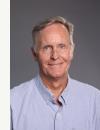
Dr. Kampe earned the B.S. degree in physics from UCLA, and his M.S. and Ph.D. in astrophysical, planetary, and atmospheric sciences from the University of Colorado, Boulder. He has authored over 35 technical and scientific papers and holds several patents on optical and hyperspectral technology. He is a Fellow of SPIE and the recipient of the 2024 SPIE Arthur E. Conrady Award in Optical Engineering.
Hyperspectral infrared sounding in a CubeSat will provide a new dimension to the current suite of IR sounders by allowing measurements at multiple times of day and enabling formation flying of IR sounders for new data products such as atmospheric motion vector winds. We focus on technology development during the CubeSat Infrared Atmospheric Sounder (CIRAS) project sponsored by the NASA Earth Science Technology Office (ESTO) and coincident studies by the National Oceanic and Atmospheric Administration (NOAA) Office of Projects, Planning, and Analysis (OPPA). The CIRAS approach incorporates key instrument technologies, developed at the Microdevices Lab (MDL) at Jet Propulsion Laboratory (JPL), including a two-dimensional array of High Operating Temperature Barrier Infrared Detector (HOT-BIRD) material, selected for its high uniformity, low cost, low noise, and higher operating temperatures than traditional materials. The second key technology is a mid-wavelength infrared grating spectrometer designed by Ball Aerospace with a JPL MDL slit and immersion grating to provide hyperspectral infrared imaging in a CubeSat volume. The third key technology is a blackbody calibration target fabricated with MDL’s black silicon to have very high emissivity in a flat plate construction. JPL has completed design and breadboard of the mechanical, electronic, and thermal subsystems for the CIRAS payload including a HOT-BIRD focal plane assembly, with filters in a dewar and a breadboard of the electronics and scan mirror assembly. Blue Canyon Technologies, developer of the CIRAS 6U CubeSat, completed the Final Design Review for the spacecraft. NOAA is sponsoring the continued development of the CIRAS Proto-Flight Model (PFM) instrument at JPL using many of the existing subsystems. Completion of the PFM is expected in mid 2021, with launch no earlier than 2022.
View contact details

